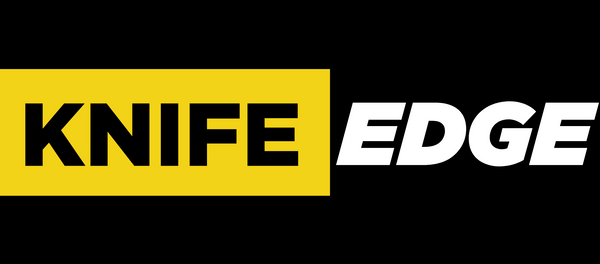What is a neck knife used for?
The short answer is: because knives.
The longer answer involves a group of cavemen who liked knives but didn't share the same penchant for wearing pants. Go figure. But, more seriously, there are some pretty logical reasons to carry a neck knife, including, but not limited to:
Two is one. One is nothing.
Even though you're attached to your pocket knife, it's not attached to you. You're likely to misplace it at some point. Don't find yourself in a situation where you need a knife but don't have one. Neck knives make excellent backups for your EDC.
Concealment
Carrying a neck knife is a great way to keep a knife on your person without making it visible to others. Law enforcement and military personnel may appreciate this more than anyone else, as their lives may depend on having a backup weapon.
Clothes
Do you like to have your knife with you at all times, but don't necessarily like being fully clothed all the time? Reconnect with your caveman roots and carry a neck knife. Clothing optional.
…We are not here to judge.
Weight
Neck knives tend to be small and lightweight, making them excellent options for ultralight backpacking. This leaves your pockets free for other important items and limits the amount of digging you have to do to reach your blade.
Access
It can be a pain to get your knife in and out of your pocket while sitting. The same goes for doing it while bundled up in a parka and heavy gloves. Slipping a neck knife in and out of the top of your jacket is so much faster and easier.
Rapid deployment
The fastest knife isn't the one you spend all day shooting with . You always have to take your hand in and out of your pocket to deploy this bad boy. A raised-point neck knife is ready to use the moment you take it out of its sheath. When you need to react in a flash, use a neck knife all the way.
GARLAND
Let's be realistic. For a knife enthusiast like you, your blade is as much a feast for the eyes as it is a tool. Wear it proudly.
This list is by no means exhaustive. There are as many reasons to carry a neck knife as there are reasons to carry knives in general. For those of you who are new to neck knife techniques, here are some helpful tips for choosing one:
Choose your neck knife type
Technically, you can take any knife, hang it on a lanyard around your neck, and call it a good one. However, true neck knives are designed to offer the sass of larger knives in compact packages. With a few exceptions, neck knives are small, lightweight, easy to conceal, and have a fixed blade and sheath. How you carry one, how you use it, and the materials and style of blade it has are up to you.
Take the tip-up carry, for example. This style allows you to quickly draw your knife from its sheath in one smooth, one-handed motion, as the knife hangs with the handle facing down. The reverse style, called the tip-down or "mountain" carry, has the handle facing up and the blade pointing down in the sheath, which means two hands are required to deploy the knife, but this is considered safer by some.
Other types have less to do with how you carry your neck knife than with its use. A self-defense neck knife, for example, might include dagger blades and T-handle push daggers, karambits, and other tactical-style blades. Most other neck knives fit better into the survival category, with rugged blades designed for everything from bushcraft to hunting to camping.
Choose the size of your neck knife
While neck knives are generally small, some are as large as your typical EDC fixed blade. Consider how you intend to use your knife and the blade size needed to meet your needs. Will you be cutting branches, performing simple cutting tasks, or cleaning your catch? Neck knives are often very effective at multitasking, but a 1.5-inch blade will likely choke when you need it to build a fire.
Materials
The construction of your neck knife is another important factor to consider before purchasing, and it depends heavily on its intended use. A neck knife dedicated to household tasks may not need the best steel or the most durable handle, but if you plan to throw your knife around for more challenging tasks—or carry it into the backcountry—a higher-quality steel with G-10 or Micarta scales is a much better choice. Some neck knives even allow for useful survival accessories, like paracord, to be integrated into the handle.
Because we can never talk about knives enough, check out our Knife Banter video to see more solid neck knife options. Are you ready to take the plunge?





